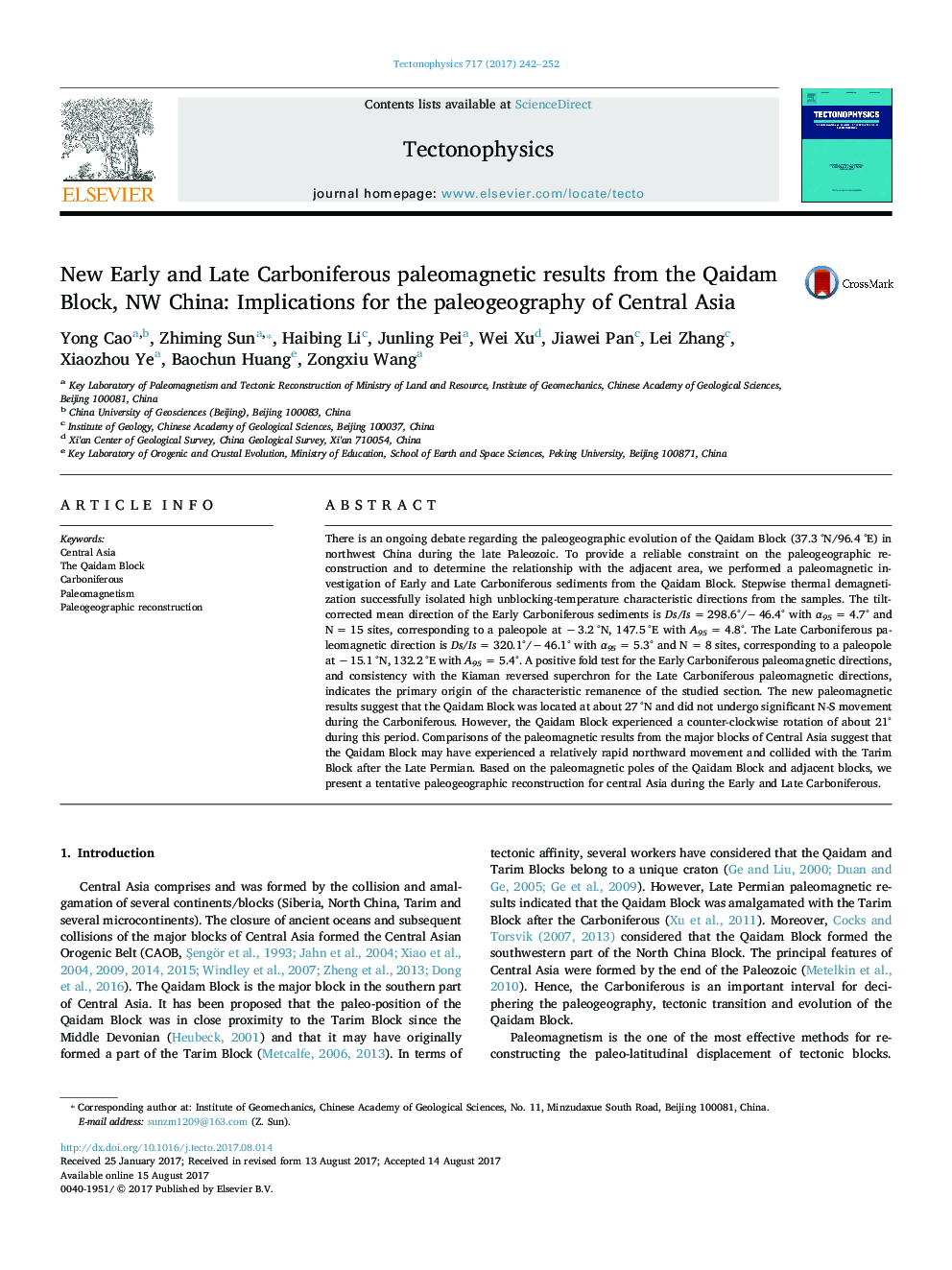| کد مقاله | کد نشریه | سال انتشار | مقاله انگلیسی | نسخه تمام متن |
|---|---|---|---|---|
| 5781471 | 1636691 | 2017 | 11 صفحه PDF | دانلود رایگان |

- New Early and Late Carboniferous paleomagnetic data were obtained in Qaidam.
- The Qaidam Block was located at about 27 °N during the Carboniferous.
- Qaidam did not undergo significant N-S movement during the Carboniferous.
There is an ongoing debate regarding the paleogeographic evolution of the Qaidam Block (37.3 °N/96.4 °E) in northwest China during the late Paleozoic. To provide a reliable constraint on the paleogeographic reconstruction and to determine the relationship with the adjacent area, we performed a paleomagnetic investigation of Early and Late Carboniferous sediments from the Qaidam Block. Stepwise thermal demagnetization successfully isolated high unblocking-temperature characteristic directions from the samples. The tilt-corrected mean direction of the Early Carboniferous sediments is Ds/Is = 298.6°/â 46.4° with α95 = 4.7° and N = 15 sites, corresponding to a paleopole at â 3.2 °N, 147.5 °E with A95 = 4.8°. The Late Carboniferous paleomagnetic direction is Ds/Is = 320.1°/â 46.1° with α95 = 5.3° and N = 8 sites, corresponding to a paleopole at â 15.1 °N, 132.2 °E with A95 = 5.4°. A positive fold test for the Early Carboniferous paleomagnetic directions, and consistency with the Kiaman reversed superchron for the Late Carboniferous paleomagnetic directions, indicates the primary origin of the characteristic remanence of the studied section. The new paleomagnetic results suggest that the Qaidam Block was located at about 27 °N and did not undergo significant N-S movement during the Carboniferous. However, the Qaidam Block experienced a counter-clockwise rotation of about 21° during this period. Comparisons of the paleomagnetic results from the major blocks of Central Asia suggest that the Qaidam Block may have experienced a relatively rapid northward movement and collided with the Tarim Block after the Late Permian. Based on the paleomagnetic poles of the Qaidam Block and adjacent blocks, we present a tentative paleogeographic reconstruction for central Asia during the Early and Late Carboniferous.
362
Journal: Tectonophysics - Volume 717, 16 October 2017, Pages 242-252